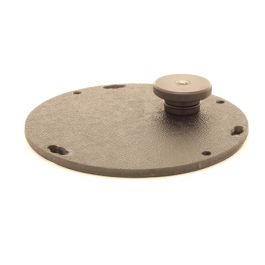lermontov
Contributor
I would have thought absorbing moisture in a humid environment would be more of an issue - at least in a sealed box its more controlled
Welcome to ScubaBoard, the world's largest scuba diving community. Registration is not required to read the forums, but we encourage you to join. Joining has its benefits and enables you to participate in the discussions.
Benefits of registering include
For repeat diving with the same lime I often leave the unit intact, with the loop closed.Yes. https://www.researchgate.net/profil...eather-carbon-dioxide-absorbent-canisters.pdf
Long words short :
So we see more than 22% reduced endurance time.
Personally i've prefer to use blind pugs for canister to seal it between dives.
And when filling - not to leave scrubber un-sealed for more time than needed to set it into canister and blind-plug it.

I would have thought absorbing moisture in a humid environment would be more of an issue - at least in a sealed box its more controlled
Carbon dioxide absorbents based on soda lime require specific amounts of moisture to be present to work efficiently. The amount of water incorporated into the different grades of material has been optimized for specific applications. Absorbent will not work if the water present in the material is frozen or the material has been allowed to dry out.
Sofnolime® removes carbon dioxide (and other acidic
contaminants) from gas streams via an exothermic, water
facilitated, base catalysed chemical reaction. The Sofnolime®
contains a carefully controlled level of water which aids the
reaction.
That's what the test proves.The topic frequently pops up in my group. I am surprised it is a concern. If you have a rebreather, do the following after each dive:
- Dry the canister. You can use moisture absorbers like Shamwow and fans to speed up the process.
- Put the scrubber back into the canister.
- Put the head/lid on the canister.
Problem solved.
I use sofnolime 20kg canisters to keep gasoline, they seal well enough to swell up when left in the sunlight.I wonder how sealed the keg is anyway? I never get a pressure difference when opening them even after the weather/temperature/altitude changes.
